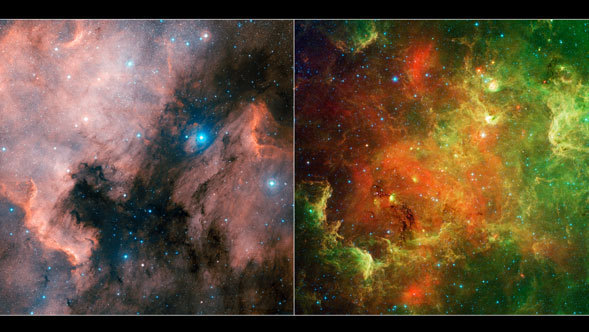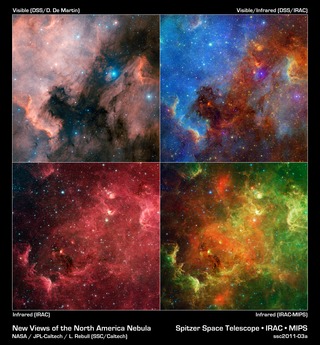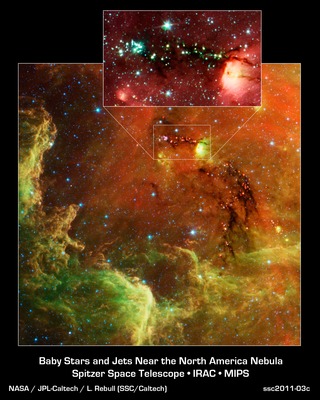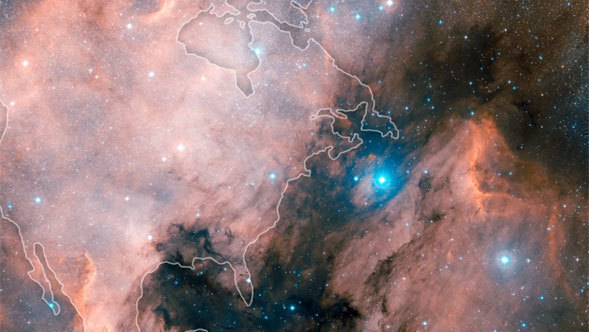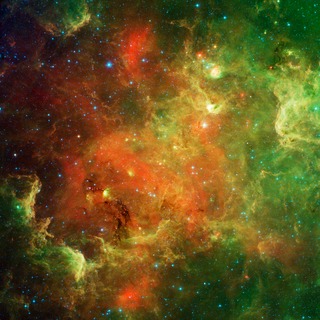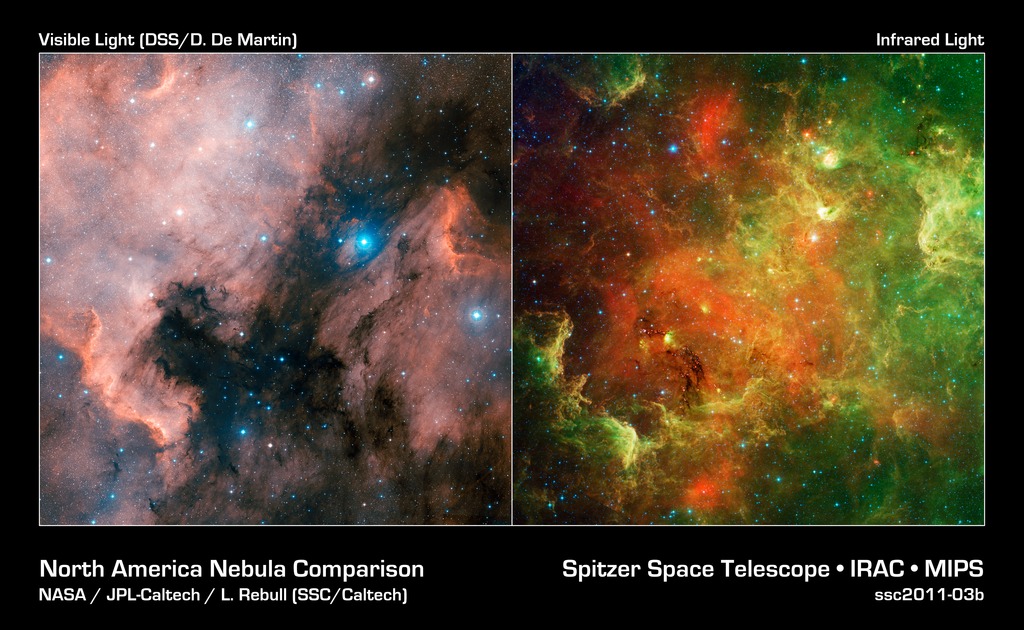
Credit: NASA/JPL-Caltech/L. Rebull (SSC/Caltech)
Observation • February 10th, 2011 • ssc2011-03b
ssc2011-03b
This image layout compares visible (left) and infrared views of the North America nebula, taken by the Digitized Sky Survey and NASA's Spitzer Space Telescope, respectively.
The nebula is named after its resemblance to the North America content in visible light. This visible view highlights the eastern seaboard and Gulf of Mexico regions. In infrared light, the continent disappears. The "Mexican Riviera" -- the west coast of Mexico -- seems to invert in texture and brightness, as does the "neck" region of the Pelican nebula, named for its resemblance to a pelican. This nebula can be seen to the right of the North America nebula in the visible image. The Gulf of Mexico transforms from a dark cloud into a "river" of hundreds of young stars.
These pictures look different in part because infrared light can penetrate dust whereas visible light cannot. Dusty, dark clouds in the visible image become transparent in Spitzer's view. In addition, Spitzer's infrared detectors pick up the glow of dusty cocoons enveloping baby stars.
The Spitzer image contains data from both its infrared array camera and multiband imaging photometer. Light with a wavelength of 3.6 microns has been color-coded blue; 4.5-micron light is blue-green; 5.8-micron and 8.0-micron light are green; and 24-micron light is red.
About the Object
- Name
- North America Nebula • NGC 7000 • Pelican Nebula • IC 5070 • IC 5067
- Type
- Nebula > Type > Star Formation
- Nebula > Appearance > Emission
- Nebula > Appearance > Dark
- Star > Evolutionary Stage > Protostar
- Distance
- 2,000 Light Years
Color Mapping
| Band | Wavelength | Telescope |
| Infrared | 3.6 µm | Spitzer IRAC |
| Infrared | 4.5 µm | Spitzer IRAC |
| Infrared | 5.8 µm | Spitzer IRAC |
| Infrared | 8.0 µm | Spitzer IRAC |
| Infrared | 24.0 µm | Spitzer MIPS |
Astrometrics
- Position (J2000)
- RA =20h 55m 33.8s
- Dec = 44° 7' 50.9"
- Field of View
- 2.3 x 2.3 degrees
- Orientation
- North is 356.4° left of vertical
